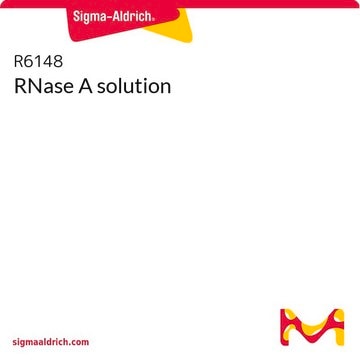Kluczowe dokumenty
G1N10
GenElute™ Mammalian Genomic DNA Miniprep Kits
sufficient for 10 purifications
Synonim(y):
Mammalian Genomic DNA Miniprep, Gen Elute
Wybierz wielkość
361,00 zł
Wybierz wielkość
About This Item
361,00 zł
Polecane produkty
Szukasz podobnych produktów? Odwiedź Przewodnik dotyczący porównywania produktów
Opis ogólny
The starting materials are lysed in a chaotropic salt-containing solution to ensure the thorough denaturation of macromolecules. The addition of ethanol causes DNA to bind when the lysate is spun through a silica membrane in a microcentrifuge tube. After washing to remove the contaminants, the DNA is eluted in 200 μL of a Tris-EDTA solution. The expected yields of genomic DNA will vary depending on the amount and type of starting material used. DNA purified with the kit has an A260/A280 ratio between 1.6 and 1.9 and can be up to 50 kb in length.
The purified genomic DNA is ready for immediate use in downstream applications such as restriction digest, PCR, southern blots, and sequencing reactions.
Isolate pure genomic DNA from cultured cells, tissues (including rodent tails), and fresh whole blood or white blood cells. The kit combines the advantages of silica binding with a microspin format and eliminates the need for expensive resins, alcohol precipitation, and hazardous organic compounds such as phenol and chloroform.
Zastosowanie
- restriction endonuclease digestions
- PCR
- Southern blots
- sequencing reactions
- cloning
- ligation
Cechy i korzyści
- Expected yield: 25 μg from 2 x 106 cultured cells; 30 μg from 25 mg of tissue
- Elution volume: 200 - 400 μl
- Time required: 20 min after lysis
- A260/A280 ratio: 1.6 - 1.9
- Mechanical homogenization required: No
Zasada
Inne uwagi
Informacje prawne
Elementy zestawu są też dostępne oddzielnie
polecane
produkt powiązany
Hasło ostrzegawcze
Danger
Zwroty wskazujące rodzaj zagrożenia
Zwroty wskazujące środki ostrożności
Klasyfikacja zagrożeń
Acute Tox. 4 Oral - Aquatic Acute 1 - Aquatic Chronic 2 - Eye Dam. 1 - Met. Corr. 1 - Resp. Sens. 1 - Skin Irrit. 2 - STOT SE 3
Organy docelowe
Respiratory system
Kod klasy składowania
8A - Combustible corrosive hazardous materials
Temperatura zapłonu (°F)
483.8 °F
Temperatura zapłonu (°C)
251 °C
Wybierz jedną z najnowszych wersji:
Masz już ten produkt?
Dokumenty związane z niedawno zakupionymi produktami zostały zamieszczone w Bibliotece dokumentów.
Klienci oglądali również te produkty
Produkty
Proste metody oczyszczania DNA/RNA wspomagają analizę genomu z różnych źródeł, zwiększając efektywność badań.
Simple DNA/RNA purification methods aid genome analysis from various sources, enhancing research efficiency.
Protokoły
Archived Formalin-fixed, Paraffin-embedded (FFPE) tissue samples are invaluable resources for profiling gene expression and studying a variety of diseases.
Zarchiwizowane próbki tkanek utrwalone w formalinie i zatopione w parafinie (FFPE) są nieocenionymi zasobami do profilowania ekspresji genów i badania różnych chorób.
GenomePlex® Whole Genome Amplification efficiently extracts DNA from animal samples for genomic analysis.
Niniejszy protokół zapewnia prostą i wygodną metodę izolacji, amplifikacji i oczyszczania genomowego DNA z wymazów z policzka. Wymazy z policzka są wygodną metodą pozyskiwania próbek DNA.
Powiązane treści
GenElute Mammalian Genomic DNA Purification Kit isolates pure DNA from mammalian cells using a silica-based membrane in spin columns.
Active Filters
Nasz zespół naukowców ma doświadczenie we wszystkich obszarach badań, w tym w naukach przyrodniczych, materiałoznawstwie, syntezie chemicznej, chromatografii, analityce i wielu innych dziedzinach.
Skontaktuj się z zespołem ds. pomocy technicznej












